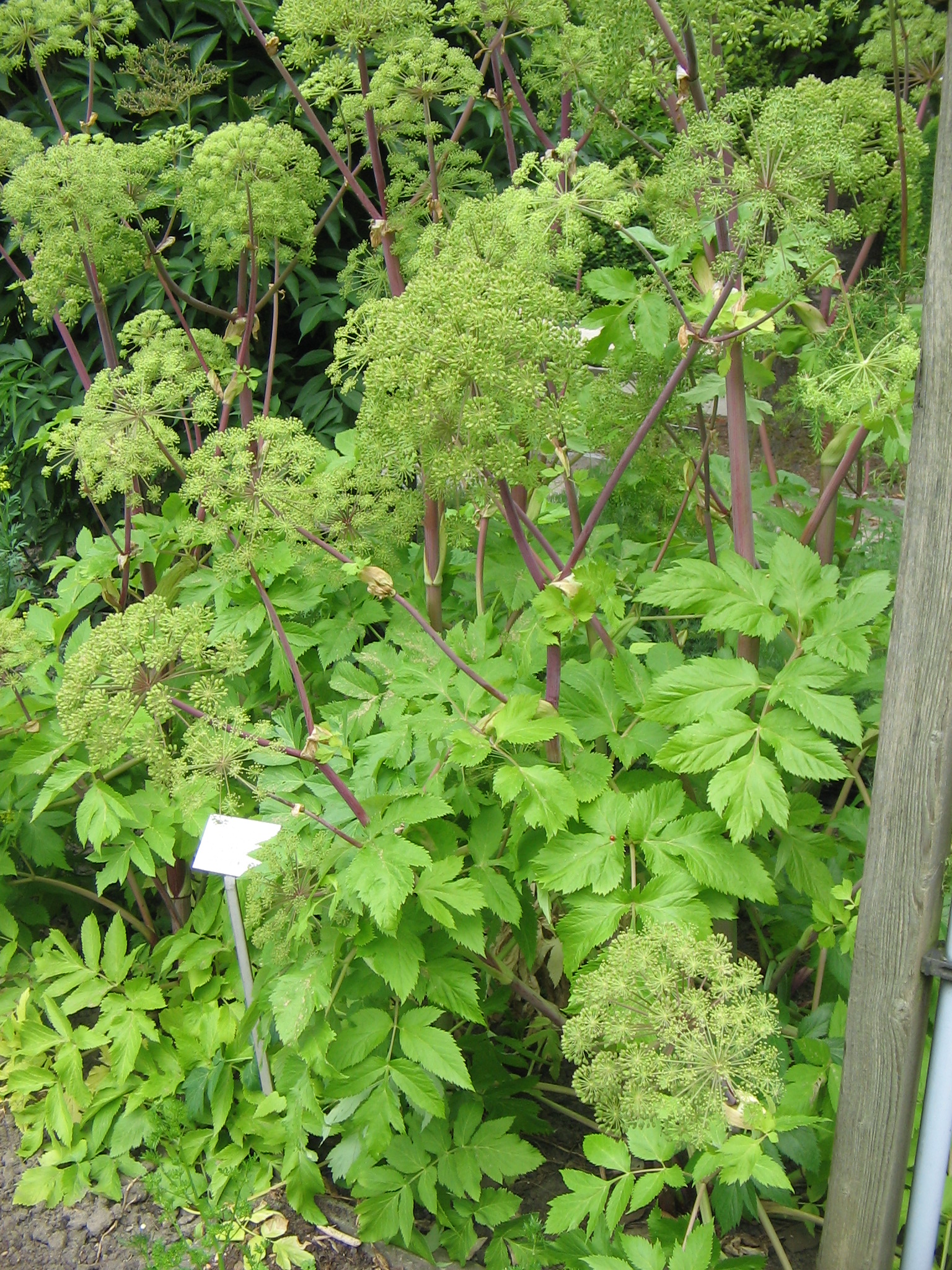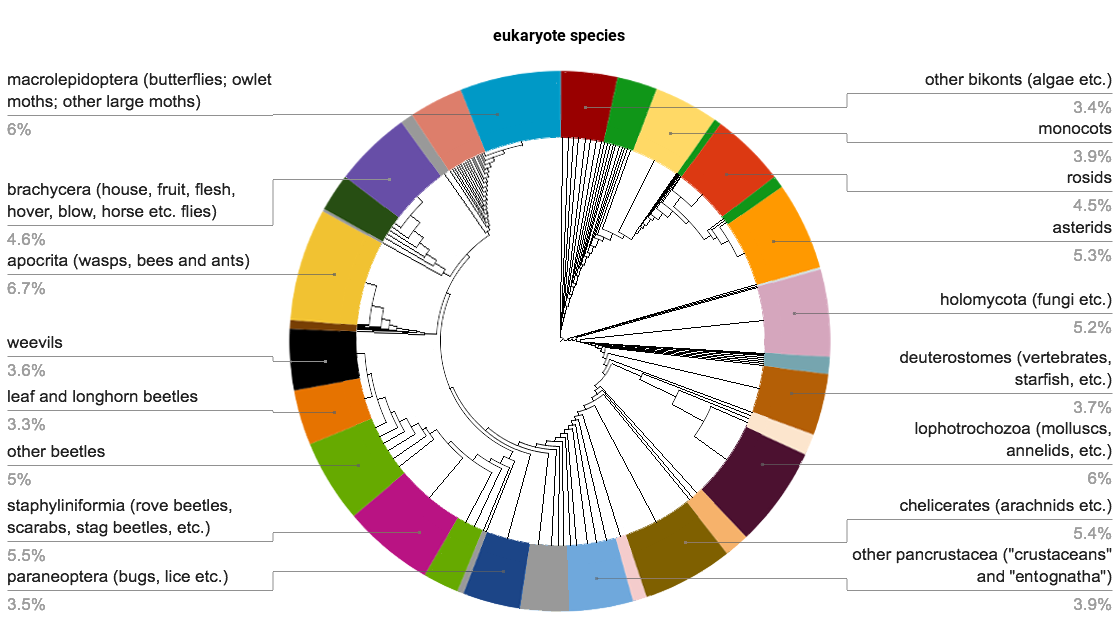|
Furanocoumarins
The furanocoumarins, or furocoumarins, are a class of organic chemical compounds produced by a variety of plants. Most of the plant species found to contain furanocoumarins belong to a handful of plant families. The families Apiaceae and Rutaceae (citrus family) include the largest numbers of plant species that contain furanocoumarins. The families Moraceae and Fabaceae include a few widely distributed plant species that contain furanocoumarins. Generally, furanocoumarins are most abundant in plants that have flowered and in ripe seeds and fruits. (An exception is the common fig where furanocoumarins are found chiefly in the milky sap of the leaves and shoots but not the fruits. Cited in McGovern and Barkley 2000, section&nbsPhytophotodermatitis) During the early stages of plant growth, their presence is not easily detected. Structure The chemical structure of furanocoumarins consists of a furan ring fused with a coumarin. The furan ring may be fused in various ways, producing ... [...More Info...] [...Related Items...] OR: [Wikipedia] [Google] [Baidu] |
Angelicin
Angelicin is the parent compound in a family of naturally occurring organic compounds known as the angular furanocoumarins. Structurally, it can be considered as benzapyra-2-one fused with a furan moiety in the 7,8-position. Angelicin is commonly found in certain Apiaceae and Fabaceae plant species such as '' Bituminaria bituminosa''. It has a skin permeability coefficient (Log''Kp'') of -2.46. The maximum absorption is observed at 300 nm. The 1HNMR spectrum is available; the infrared and mass spectra of angelicin can be found in thidatabase The sublimation of angelicin occurs at 120 °C and the pressure of 0.13 Pa. Angelicin is a coumarin. History and etymology Humans have used plants rich in angelicin for centuries. The earliest known record dates back to 3000 BC when ancient Egyptians applied the oil and sap of local ''Apiaceae'' species exposing their skin to sunlight to cure vitiligo. In meantime, tribes in India used '' Psoralea corylifolia'' which contained psor ... [...More Info...] [...Related Items...] OR: [Wikipedia] [Google] [Baidu] |
Bergapten
Bergapten (5-methoxypsoralen) is a naturally-occurring organic chemical compound produced by numerous plant species, especially from the carrot family Apiaceae and the citrus family Rutaceae. For example, bergapten has been extracted from 24 species of the genus ''Heracleum (plant), Heracleum'' in the family Apiaceae. Cited by Mitchell and Rook (1979). In the family Rutaceae, various ''Citrus'' species contain significant amounts of bergapten, especially the bergamot orange, the Micrantha (citrus), micrantha, and certain varieties of Lime (fruit), lime and bitter orange. Bergapten belongs to a class of chemical compounds known as the furanocoumarins. In 1834, Kalbrunner isolated 5-methoxypsoralen from bergamot essential oil, hence the common name "bergapten". It was the first furanocoumarin to be isolated and identified. Toxicity Bergapten is a derivative of psoralen, the parent compound of a family of naturally-occurring organic compounds known as the linear furanocoumari ... [...More Info...] [...Related Items...] OR: [Wikipedia] [Google] [Baidu] |
Angelicin
Angelicin is the parent compound in a family of naturally occurring organic compounds known as the angular furanocoumarins. Structurally, it can be considered as benzapyra-2-one fused with a furan moiety in the 7,8-position. Angelicin is commonly found in certain Apiaceae and Fabaceae plant species such as '' Bituminaria bituminosa''. It has a skin permeability coefficient (Log''Kp'') of -2.46. The maximum absorption is observed at 300 nm. The 1HNMR spectrum is available; the infrared and mass spectra of angelicin can be found in thidatabase The sublimation of angelicin occurs at 120 °C and the pressure of 0.13 Pa. Angelicin is a coumarin. History and etymology Humans have used plants rich in angelicin for centuries. The earliest known record dates back to 3000 BC when ancient Egyptians applied the oil and sap of local ''Apiaceae'' species exposing their skin to sunlight to cure vitiligo. In meantime, tribes in India used '' Psoralea corylifolia'' which contained psor ... [...More Info...] [...Related Items...] OR: [Wikipedia] [Google] [Baidu] |
Psoralen
Psoralen (also called psoralene) is the parent compound in a family of naturally occurring organic compounds known as the linear furanocoumarins. It is structurally related to coumarin by the addition of a fused furan ring, and may be considered as a derivative of umbelliferone. Psoralen occurs naturally in the seeds of ''Psoralea corylifolia'', as well as in the common fig, celery, parsley, Zanthoxylum, West Indian satinwood, and in all citrus fruits. It is widely used in PUVA (psoralen + Ultraviolet#Subtypes, UVA) treatment for psoriasis, eczema, vitiligo, and cutaneous T-cell lymphoma; these applications are typically through the use of medications such as Methoxsalen. Many furanocoumarins are extremely toxic to fish, and some are deposited in streams in Indonesia to catch fish. Uses Psoralen is a mutagen, and is used for this purpose in molecular biology research. Psoralen Intercalation (biochemistry), intercalates into DNA and on exposure to ultraviolet (UVA) radiation can f ... [...More Info...] [...Related Items...] OR: [Wikipedia] [Google] [Baidu] |
Methoxsalen
Methoxsalen (or Xanthotoxin, 8-methoxypsoralen) sold under the brand name Oxsoralen among others, is a medication used to treat psoriasis, eczema, vitiligo, and some lymphoma, cutaneous lymphomas in conjunction with exposing the skin to ultraviolet (UVA) light from lamps or sunlight. Methoxsalen modifies the way skin cells receive the UVA radiation, allegedly clearing up the disease. Levels of individual patient PUVA exposure were originally determined using the Fitzpatrick scale. The scale was developed after patients demonstrated symptoms of phototoxicity after oral ingestion of methoxsalen followed by PUVA therapy. Chemically, methoxsalen is a derivative of psoralen and belongs to a class of organic natural molecules known as furanocoumarins. They consist of coumarin annulated with furan. It can also be injected and used topically. Natural sources In 1947, methoxsalen was isolated (under the name "ammoidin") from the plant ''Ammi majus'', bishop's weed. In 1970, Nielsen extr ... [...More Info...] [...Related Items...] OR: [Wikipedia] [Google] [Baidu] |
Ammi Majus
''Ammi majus'', commonly called bishop's flower, false bishop's weed, laceflower, bullwort, etc., is a member of the carrot family Apiaceae. The plant, which has white lace-like flower clusters, has a large distribution through Southern Europe, North Africa and West and Central Asia, though it is hypothesized to be native to the Nile River Valley. Nomenclature The plant is called by various common names: bishop's flower or bishop's weed (false bishop's weed); laceflower, lady's lace or false Queen Anne's lace; bullwort (large bullwort); white dill and greater ammi. It is known in Arabic as ''hirz al-shayateen'' () or ''khella/khilla shaitani'' (), meaning, respectively, ‘Devil’s Amulet/Refuge’ and ‘Devil’s Toothpick-weed. The plant has also been introduced into China, where it is called ''da a min qin'' ( zh, 大阿米芹) and cultivated in medicinal farms. Description ''Ammi majus'' is a herbaceous annual, or rather a biennial that behaves like an annual in cult ... [...More Info...] [...Related Items...] OR: [Wikipedia] [Google] [Baidu] |
Fungus
A fungus (: fungi , , , or ; or funguses) is any member of the group of eukaryotic organisms that includes microorganisms such as yeasts and mold (fungus), molds, as well as the more familiar mushrooms. These organisms are classified as one of the kingdom (biology)#Six kingdoms (1998), traditional eukaryotic kingdoms, along with Animalia, Plantae, and either Protista or Protozoa and Chromista. A characteristic that places fungi in a different kingdom from plants, bacteria, and some protists is chitin in their cell walls. Fungi, like animals, are heterotrophs; they acquire their food by absorbing dissolved molecules, typically by secreting digestive enzymes into their environment. Fungi do not photosynthesize. Growth is their means of motility, mobility, except for spores (a few of which are flagellated), which may travel through the air or water. Fungi are the principal decomposers in ecological systems. These and other differences place fungi in a single group of related o ... [...More Info...] [...Related Items...] OR: [Wikipedia] [Google] [Baidu] |
Epithelial
Epithelium or epithelial tissue is a thin, continuous, protective layer of cells with little extracellular matrix. An example is the epidermis, the outermost layer of the skin. Epithelial ( mesothelial) tissues line the outer surfaces of many internal organs, the corresponding inner surfaces of body cavities, and the inner surfaces of blood vessels. Epithelial tissue is one of the four basic types of animal tissue, along with connective tissue, muscle tissue and nervous tissue. These tissues also lack blood or lymph supply. The tissue is supplied by nerves. There are three principal shapes of epithelial cell: squamous (scaly), columnar, and cuboidal. These can be arranged in a singular layer of cells as simple epithelium, either simple squamous, simple columnar, or simple cuboidal, or in layers of two or more cells deep as stratified (layered), or ''compound'', either squamous, columnar or cuboidal. In some tissues, a layer of columnar cells may appear to be stratified due ... [...More Info...] [...Related Items...] OR: [Wikipedia] [Google] [Baidu] |
Insect
Insects (from Latin ') are Hexapoda, hexapod invertebrates of the class (biology), class Insecta. They are the largest group within the arthropod phylum. Insects have a chitinous exoskeleton, a three-part body (Insect morphology#Head, head, Thorax (insect anatomy), thorax and abdomen (insect anatomy), abdomen), three pairs of jointed Arthropod leg, legs, compound eyes, and a pair of antenna (biology), antennae. Insects are the most diverse group of animals, with more than a million described species; they represent more than half of all animal species. The insect nervous system consists of a insect brain, brain and a ventral nerve cord. Most insects reproduce Oviparous, by laying eggs. Insects Respiratory system of insects, breathe air through a system of Spiracle (arthropods), paired openings along their sides, connected to Trachea#Invertebrates, small tubes that take air directly to the tissues. The blood therefore does not carry oxygen; it is only partly contained in ves ... [...More Info...] [...Related Items...] OR: [Wikipedia] [Google] [Baidu] |
Defense Mechanism
In psychoanalytic theory, defence mechanisms are unconscious psychological processes that protect the self from anxiety-producing thoughts and feelings related to internal conflicts and external stressors. According to this theory, healthy people use different defence mechanisms throughout life. A defence mechanism can become pathological when its persistent use leads to maladaptive behaviour such that the physical or mental health of the individual is adversely affected. Among the purposes of defence mechanisms is to protect the mind/self/ego from anxiety or to provide a refuge from a situation with which one cannot currently cope. Examples of defence mechanisms include: '' repression'', the exclusion of unacceptable desires and ideas from consciousness; '' identification'', the incorporation of some aspects of an object into oneself; '' rationalization'', the justification of one's behaviour by using apparently logical reasons that are acceptable to the ego, thereby furt ... [...More Info...] [...Related Items...] OR: [Wikipedia] [Google] [Baidu] |
Parsnip
The parsnip (''Pastinaca sativa'') is a root vegetable closely related to carrot and parsley, all belonging to the flowering plant family Apiaceae. It is a biennial plant usually grown as an annual. Its long taproot has cream-colored skin and flesh, and, left in the ground to mature, becomes sweeter in flavor after winter frosts. In its first growing season, the plant has a rosette of pinnate, mid-green leaves. If unharvested, it produces a flowering stem topped by an umbel of small yellow flowers in its second growing season, later producing pale brown, flat, winged seeds. By this time, the stem has become woody, and the taproot inedible. Precautions should be taken when handling the stems and foliage, as parsnip sap can cause a skin rash or even blindness if exposed to sunlight after handling. The parsnip is native to Eurasia; it has been used as a vegetable since antiquity and was cultivated by the Romans, although some confusion exists between parsnips and carrots i ... [...More Info...] [...Related Items...] OR: [Wikipedia] [Google] [Baidu] |







